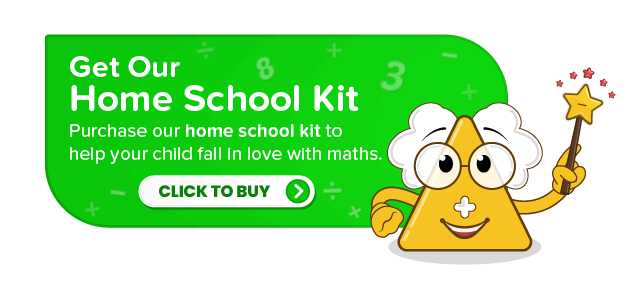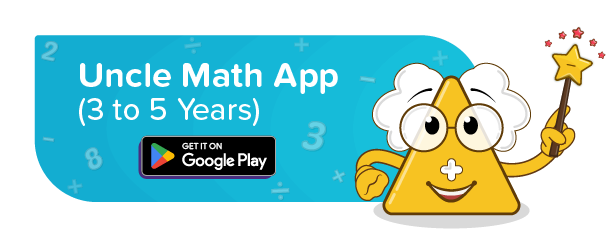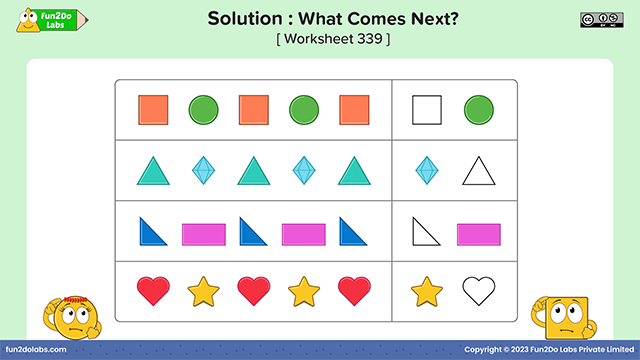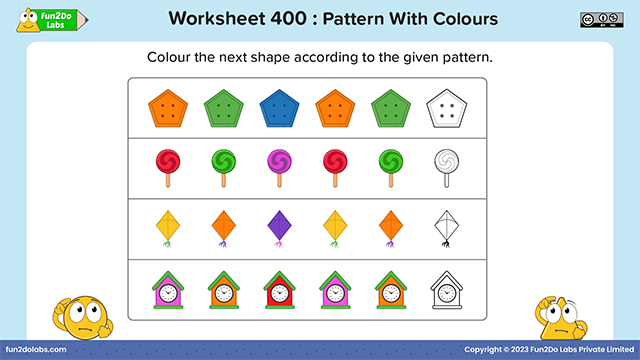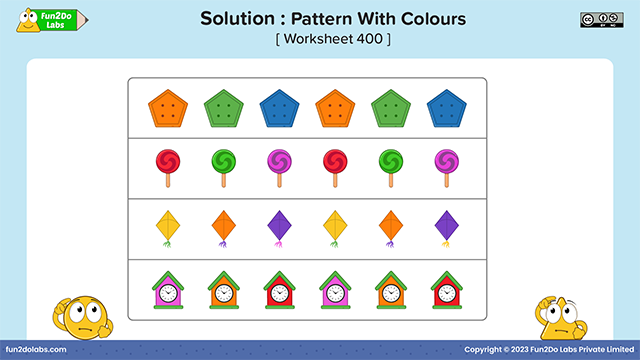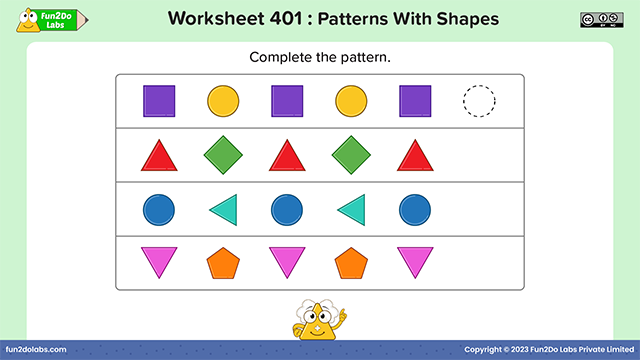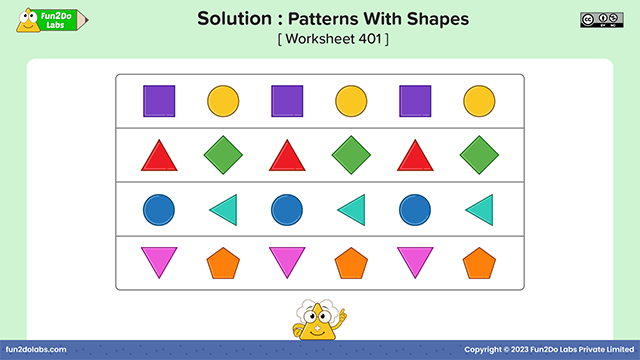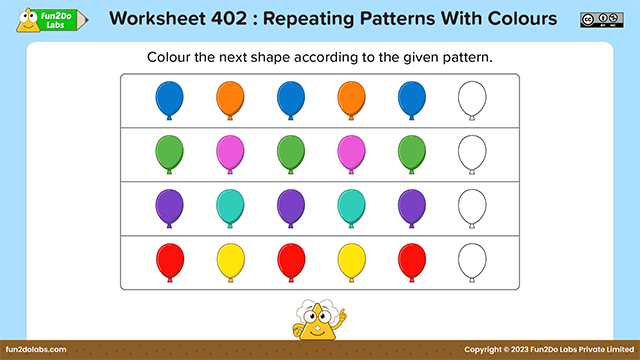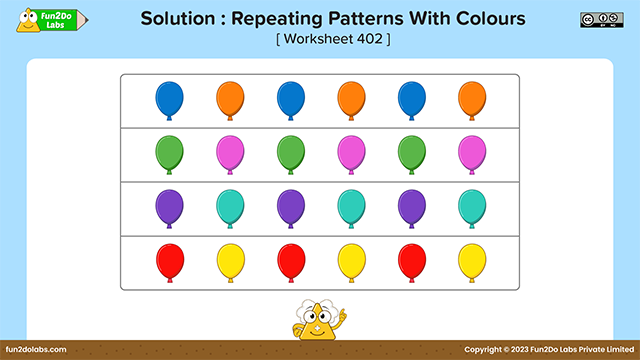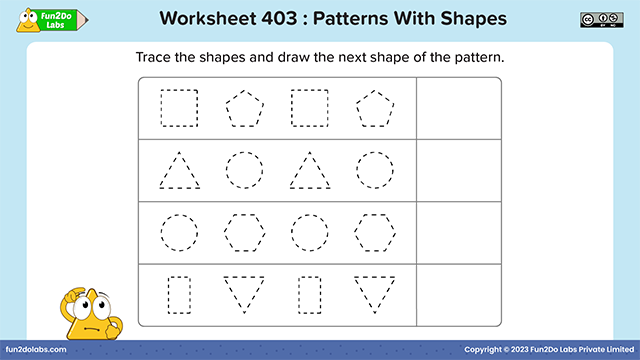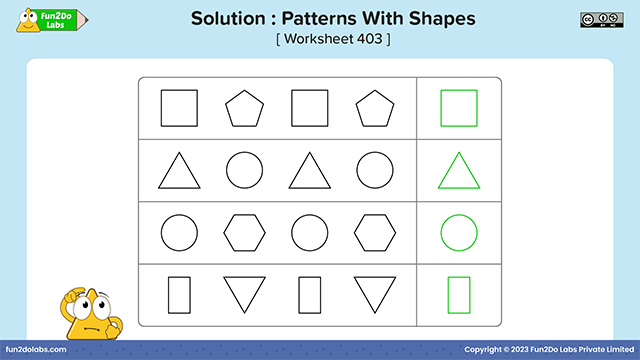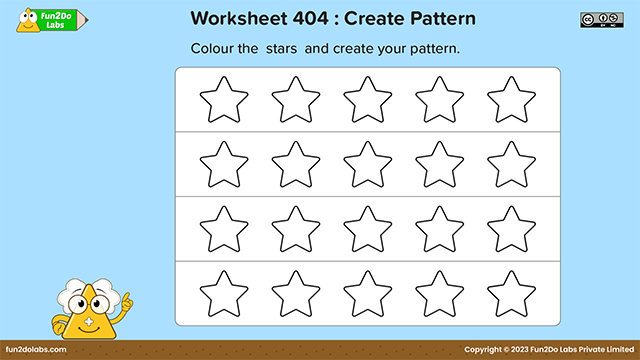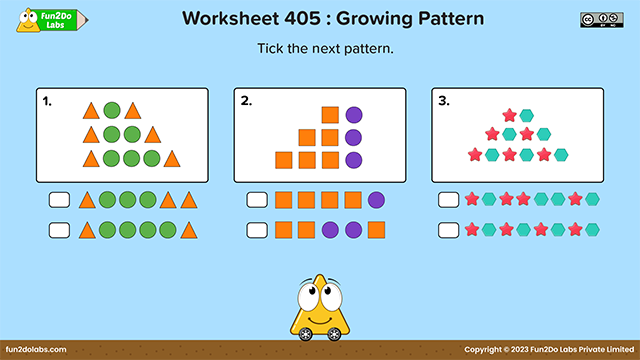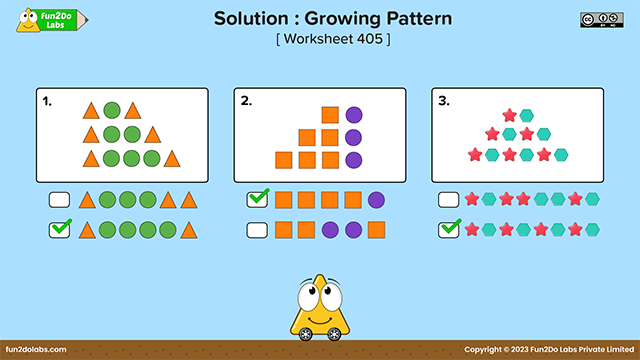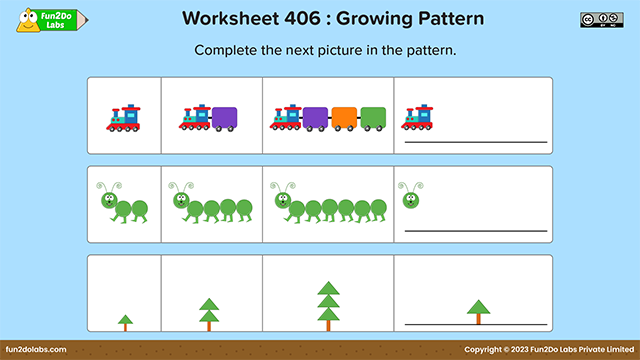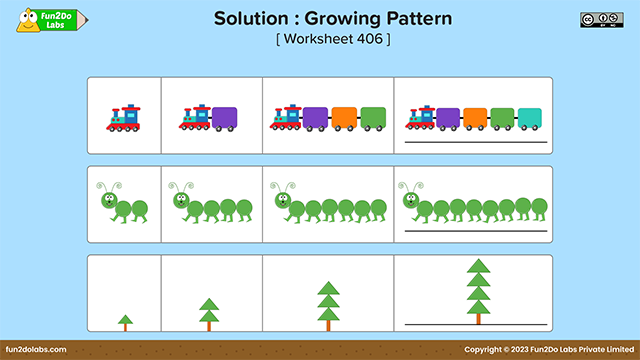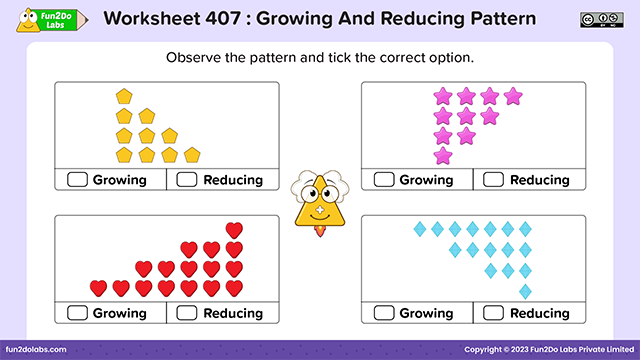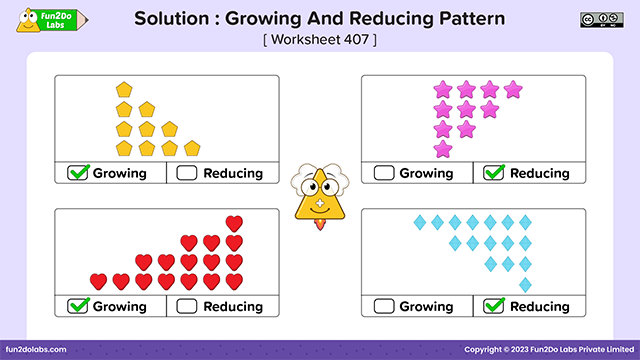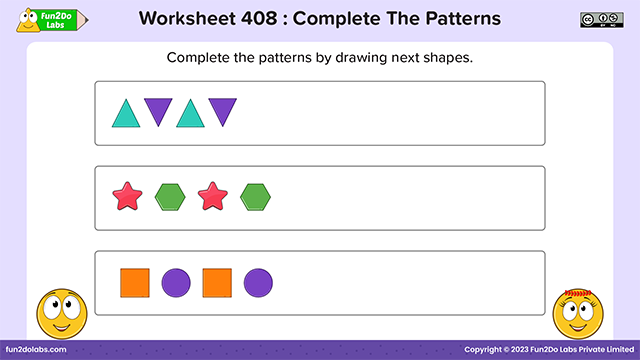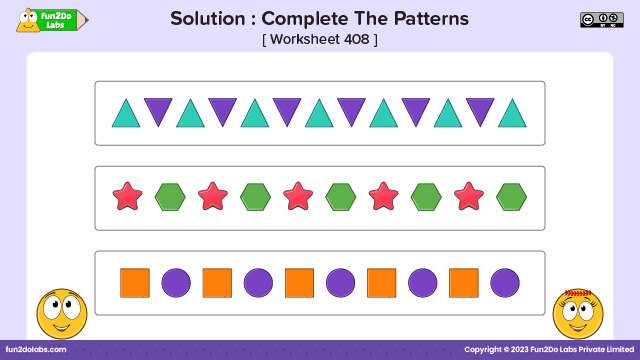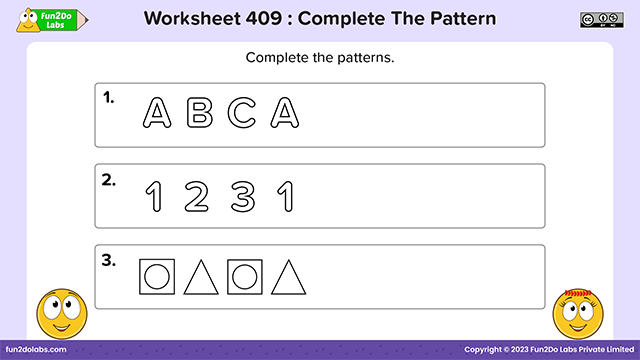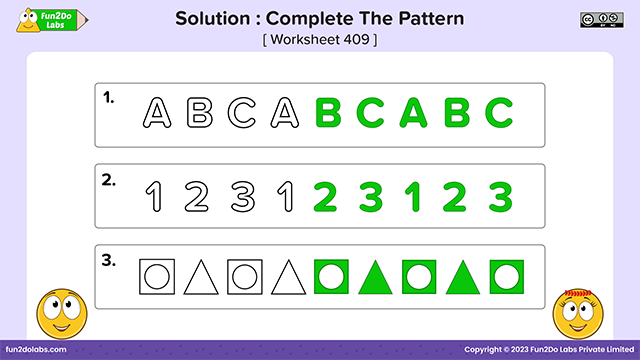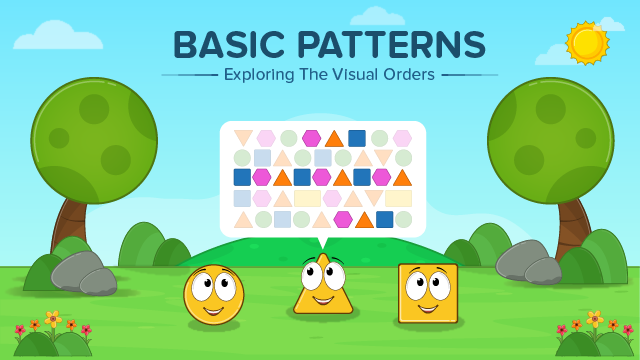
We witness patterns all around us, whether it’s a pattern of leaves on a single tree, patterns in the zebra, patterns in our dresses, or patterns of flats in a housing society. Basically, we see things or objects repeating themselves in a particular sequence.
The same goes for mathematics. In this, we see numbers, shapes, letters, colours, or objects repeat themselves following certain rules. These rules further help us solve problems related to patterns.
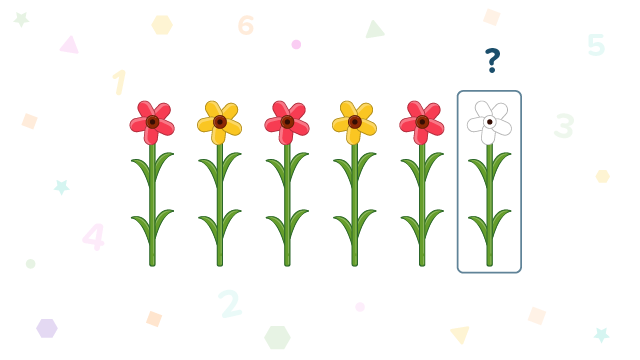
In the above image, the rule that is followed is that the red flower is in the odd places and the yellow flower is in the even places. So, the next figure in the pattern will be :
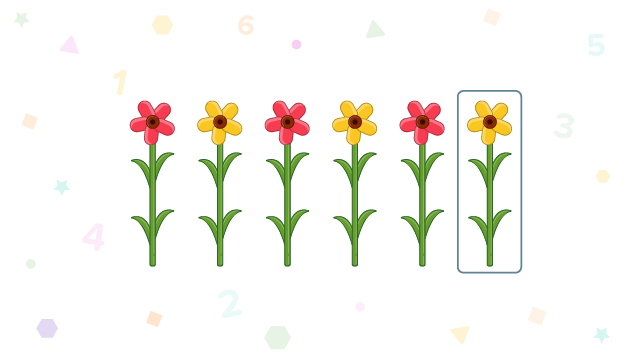
Teaching patterns to children helps them observe relationships and find connections to make predictions. Children need to analyse and expand on the given pattern as a question. To study patterns in numbers, children must have knowledge of numbers and counting, even numbers, odd numbers, skip counting, multiplication tables, etc.
Patterning Attributes :
The patterning attributes describe or compare the elements in the pattern.
For example : Size, colour, shape, or number.
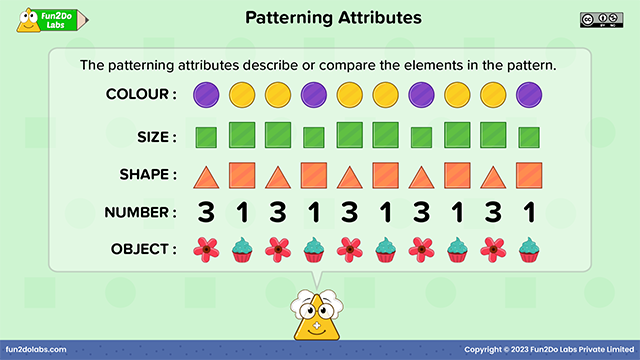
Patterns generally observe the rules mentioned below :
Repeating Pattern
The pattern in which shapes, numbers, colours, or letters repeat over and over again is called a repeating pattern.
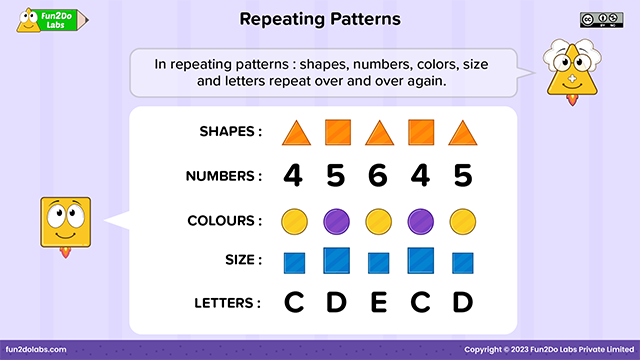
Growing Pattern
The pattern in which numbers or objects are placed in increasing order is called a growing pattern. The smallest unit of the pattern that repeats is called the “core of the pattern. Every time a growing pattern is repeated, something new is added to the core.
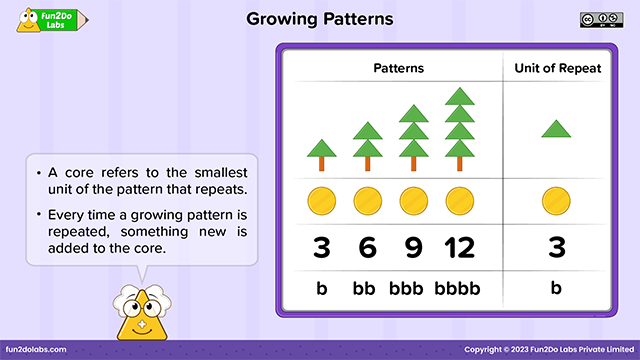
Reducing Pattern
The pattern in which numbers decrease in value or designs and objects get smaller and more compact is called a reducing or shrinking pattern. In this pattern, each number is smaller than the previous one.
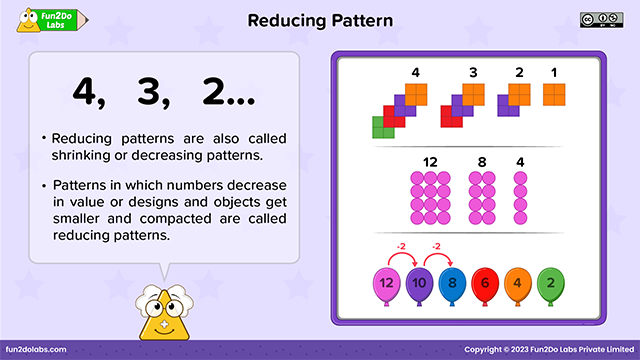
Shape Pattern
When a group of shapes in a pattern follow a particular rule of repeating, reducing, or growing, the pattern is called a shape pattern. Shapes in the pattern can be simple 2D shapes like circles, squares, triangles, etc., or other materialistic objects such as candies, stars, ice creams, flowers, moons, etc.
Number Pattern
When numbers in the pattern follow a particular rule of repeating, reducing, or growing, the pattern or sequence is called a number pattern.
For example : In the following sequence of numbers – 2, 4, 6, 8, 10, ……….
Here, numbers seem to follow the rule of the growing pattern in the series of even numbers.
Teaching patterns with kid-friendly, clear, and easy-to-understand posters from Uncle Math School by Fun2Do Labs :
Ignite kids’ curiosity with engaging stories for role play and skits, making the learning of this concept an exciting and effective experience. Teaching patterns through stories from Uncle Math School by Fun2Do Labs :
- When Cirha Spots Patterns?
- Secret Locker And The Robbery
- Repeating Patterns And The Secret Locker
- Trip To Growing Pattern Land
Learning patterns can be made enjoyable by incorporating interactive games and activities.
Listening Pattern :
This is one of the most captivating activities for the little ones. This activity can be performed with a single or group of kids. Kids can be settled down and instructed to follow you.
You can explain a simple sequence of clapping to kids and have them repeat it back to you. This activity helps in clearly understanding the concept of patterns.
Here are some examples :
- Clap…. clap-clap…. clap
- Clap-clap…..clap-clap…. clap-clap
- Clap-clap…..clap……clap-clap……clap…..clap-clap
Button Patterns :
This activity is a great way to introduce preschoolers to simple patterns. In an ice tray, kids will create patterns using different coloured buttons. As preschoolers practise forming colour patterns, they will develop sequencing skills.
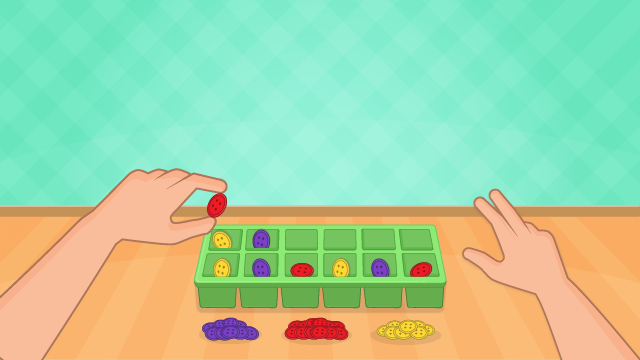
Help your kids practise patterns with interesting and fun worksheets and solutions from Uncle Math by Fun2Do Labs.


